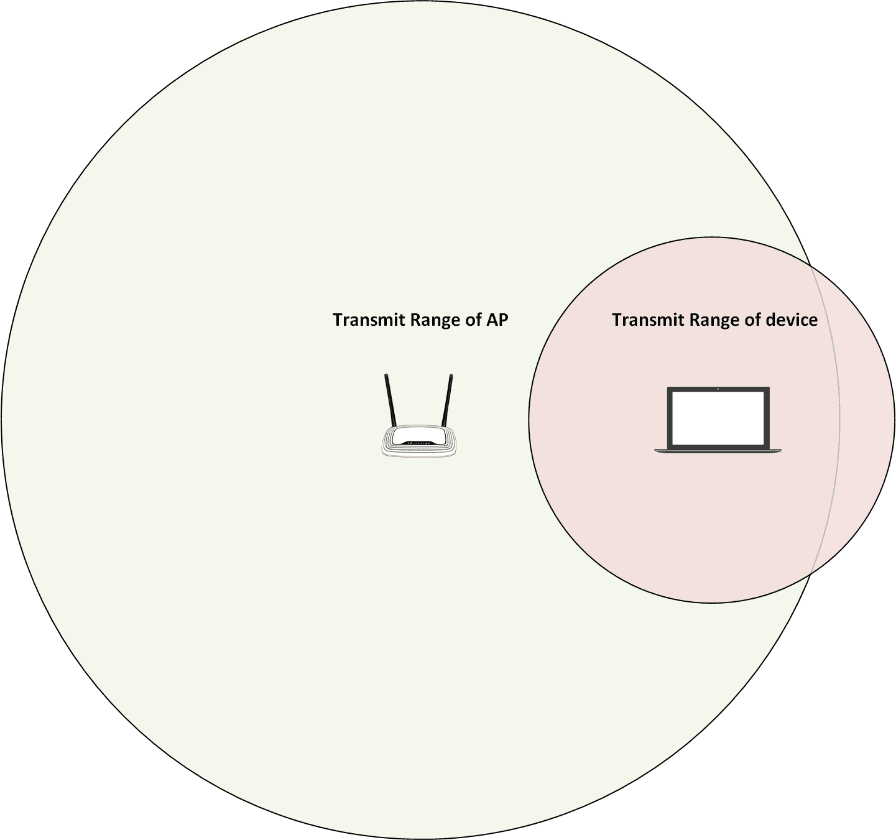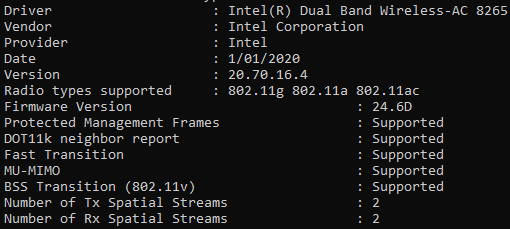You’ve just purchased some shiny new Wireless Access Points from Vendor X. Vendor X has promised you lightning-fast, wired-like connection speeds. Product datasheets speak of incomprehensible Wi-Fi data rates and sky-high maximum client connection limits; it all sounds great!
You deploy the APs which are now in production, so what’s the first thing you do? Run a speed test of course! The tests report speeds that outperform your previous network, but it’s still a fraction of what you expected. You also notice that your video calls are still buffering when roaming between buildings – What’s gone wrong?
One of the most overlooked aspects of Wi-Fi design is understanding the wireless capabilities of your mobile devices. When designing a wired network, we seldom consider what features our devices support. However, the wireless world is a completely different beast. At the time of writing, the IEEE 802.11 Wi-Fi standard has seen 34 amendments and modifications. There are also 8 additional draft amendments hoping to be ratified in the near future. Some of the technologies introduced with each amendment have no relevance to enterprise Wi-Fi networks, but many amendments are relevant and should be utilised where possible.
In this article, I’ll share with you some of the most common wireless capabilities of mobile devices impacting performance and why you should care if they support them.
- Transmit Power Limits
- MIMO Capabilities
- Permitted Channels
- Roaming Features
- Physical Layer Standards Support
- Determining Device Capabilities
- Conclusion
Transmit Power Limits
One of the most misunderstood concepts surrounding Wi-Fi is the requirement to match the transmit power between mobile devices and APs. Consider the analogy of two people having a conversation across a field. One person is speaking through a megaphone (the AP), while the other person (mobile device) is speaking at a regular volume. The mobile device can easily hear the AP, but the AP may not be able to hear the mobile device. This often results in one-way communications. The image below is a simplified representation of the issue.

Due to their small form factor, mobile devices have a limited battery capacity. One of the easiest ways for manufacturers to decrease power consumption is to limit the transmit power of the devices’ Wi-Fi radios.
Far too often I encounter customers complaining of having ‘5 bars of signal’ but slow speeds. This is a classic symptom of an AP’s transmission power being set to a level well beyond the capabilities of the mobile devices. Knowing the minimum and maximum transmit power values of all wireless devices in a network is a critical piece in determining the AP placement as part of the design process.
Thankfully, the receive sensitivity of mobile devices has improved dramatically so it’s not a huge issue anymore, especially with high-density deployments being much more common.
MIMO Capabilities
Multiple-Input Multiple-Output (MIMO) is a technology introduced to 802.11n in 2009 and has been a staple for the Wi-Fi standards that have followed. MIMO utilises multiple radios and antennas and allows for the transmission and reception of multiple simultaneous data streams by exploiting an old undesirable phenomenon called multipath. The end result for users is a drastic increase in data rates. A device capable of receiving two unique data streams can effectively receive double the throughput. A device capable of receiving three unique data streams can effectively receive triple the throughput.
The current Wi-Fi standard allows up to eight MIMO spatial streams, but most high-end mobile devices only support two or three streams. Some devices, despite supporting standards which allow for MIMO operations, only support a single spatial stream – effectively disabling MIMO.
Understanding your device’s MIMO capabilities is key to determining your maximum achievable throughput.
Permitted Channels
Wireless networks typically support operations in two Radio Frequency (RF) bands – 2.4 GHz and 5 GHz. A wireless device will transmit in one band, or both, with a radio (transmitter and receiver) assigned to each. The RF bands used for wireless networks have been subdivided into equal, smaller bands and designated their own channel number. The 2.4 GHz band allows for 3 non-overlapping channels, while the 5 GHz band allows for 23 non-overlapping channels.
Your wireless infrastructure will allow the transmission on all permitted channels within your region, however, your mobile devices may not support them all. By knowing which channels your devices don’t support, you can make sure that your APs don’t transmit on those channels. What happens when you allow an AP to transmit on a channel that a device doesn’t support? You effectively create a blackspot for the device as the cannot hear the AP’s signal. It has no idea the AP is there.
Channel support for mobile devices has greatly improved over time, but there are still many devices on the market that don’t support the full range of 5 GHz channels.
Roaming Features
It’s all well and good for a mobile device to be capable of blazing-fast connection speeds while stationary, but what about when you are on the move? Can the device maintain those connection speeds when transitioning between APs? Ideally, devices should also roam to an AP which is not under load or experiencing other performance issues.
There are technologies available to assist with roaming, but device support varies more than we’d all like. The following sections provide an overview of the three main roaming technologies available today.
Assisted Roaming
Assisted Roaming (802.11k) defines ways in which the Wi-Fi infrastructure and client stations can work together to determine the best AP for clients to roam to at any given time. The APs will provide moving clients with an optimised list of roaming targets as the signal strength of the connected AP weakens. Prior to 802.11k, a client station would generally connect to an AP transmitting the strongest signal alone.
Fast Transition
Fast Transition (802.11r) has brought much-needed roaming efficiencies for WPA2-Enterprise (802.1x) networks. 802.11r minimises the disruption to mobile and latency-sensitive applications while moving between APs. By storing encryption keys for authenticated clients on every AP, clients no longer need to go through the full authentication process as it connects to a different AP. Without 802.11r, dropped voice or video calls, and negative performance is common for devices on the move.
BSS Transition Management
BSS Transition Management (802.11v) defines ways in which the Wi-Fi infrastructure and mobile devices can exchange information about the state of the RF environment and topology to assist clients with roaming decisions. Client stations also have the ability to exchange information regarding the RF environment amongst themselves. This allows client stations to be more aware of their surroundings and hopefully improve the overall performance of the network.
Physical Layer Standards Support
It might sound like an obvious tip, to update to the latest and greatest technologies, but Wi-Fi is developed at break-neck speeds. Ensuring that your infrastructure and mobile devices support the latest 802.11 physical layer standards, allows you to keep up with ever-growing performance demands of network services and applications. While overall throughout certainly increases with each standard, the last two standards focus on much-needed traffic management and efficiencies.
For example, the up and coming 802.11ax (Wi-Fi 6) introduces technologies that could be a game-changer if fully supported by vendors. Some of the best features to appear in 802.11ax include:
- Orthogonal Frequency Division Multiple Access (OFDMA) – allows the subdivision of channels into smaller frequency allocations so that multiple users can transmit data simultaneously.
- Multi-User MIMO (MU-MIMO) – allows APs to send unique data to multiple users simultaneously using different spatial streams.
- BSS Colouring – a technique to differentiate whether client transmissions on the same channel are connected to the same APs so that the APs can continue to efficiently serve clients and avoid collisions.
802.11ac (retroactively labelled Wi-Fi 5) made some large leaps over 802.11n as well. While 802.11n allowed APs to utilise 40 MHz channel widths, 802.11ac introduced 80 and 160 MHz channels. Each step up effectively doubles the throughput from the previous. I am a big believer in using 20 MHz channels to minimise channel re-use and achieve cleaner RF signal. I really think anything more than 40 MHz is mostly market hype! There are corner cases where 80 MHz and 160 MHz channels could be used if you truly believe you need to push multiple GB/s. However, enabling wider channel-widths without understanding the impact on your environment can be detrimental to Wi-Fi performance. Proceed with caution!
Determining Device Capabilities
So now you are aware of some of the key wireless capabilities that can affect performance, but how do you know what your device does or doesn’t support? While there is no single source of truth, there are a number of places you can look.
Windows Command Line
For devices running Microsoft Windows, gathering Wi-Fi data couldn’t be simpler. Using the commands netsh wlan show drivers and netsh wlan show wirelesscapabilities you will find a wealth of information regarding wireless capabilities. If you want to filter out the noise and display the info that really matters, the following command;
netsh wlan show all | findstr /c:"Firmware Version" /c:"DOT11k" /c:"Transition" /c:"MU-MIMO" /c:"Spatial Streams" /c:"Management Frames" /c:"Driver :" /c:"Vendor " /c:"Provider" /c:"Date" /c:"Version :" /c:"Radio types"The ouput should look something like this;

I have also posted the code in the form of a PowerShell script on Github as it will likely evolve over time.
If Windows doesn’t list support for a technology but you expect it to, this could be a driver issue. Try upgrading the Wi-Fi adapters drivers to the latest version and execute the above command again.
Mike Albano’s List
For non-Windows devices, one of my favourite places to determine wireless capabilities is the list put together by Mike Albano. Mike and others in the Wi-Fi community have used packet analysis software to determine the level of adapter support. The ‘association request’ frame sent by a mobile device to an AP contains handy information including channel support and transmit power capabilities.
Vendor Documentation
The level of detail listed in adapter documentation varies between vendors, but it should always be used as a reference. Some Wi-Fi adapters have been found to advertise support for certain roaming technologies for example, but official documentation says otherwise. You should always contact your vendor if unsure as to the features it supports.
Wi-Fi Alliance
Another great source of information for wireless capabilities is the Wi-Fi Alliance. One of the Wi-Fi Alliance’s primary tasks is to ensure interoperability of Wi-Fi technologies by providing certification testing. Their website has a product finder tool, allowing you to search an adapter and determine it’s level of product certification.
It is important to note that the Wi-Fi Alliance may list their certification programs by the marketing term given to technologies and not necessarily the official IEEE standards name that it represents. The image below, for example, shows that an adapter supports Fast Transition as part of the Agile Multiband Certification. The IEEE recognised name for Fast Transition is 802.11r.
Conclusion
Whether you are a Network Administrator, CIO, or Solutions Consultant – knowing the wireless capabilities of today’s mobile devices is as important as ever. By knowing what features devices are capable of, you can set and manage realistic expectations regarding network performance and functionality. Because no matter how much you have invested in your network infrastructure, sometimes the limiting factor is the end devices themselves.
Next time you plan a Wi-Fi upgrade, or hope to optimise your Wi-Fi performance, don’t forget about the capabilities of the mobile devices that will operate on the network!
This article was originally featured here.